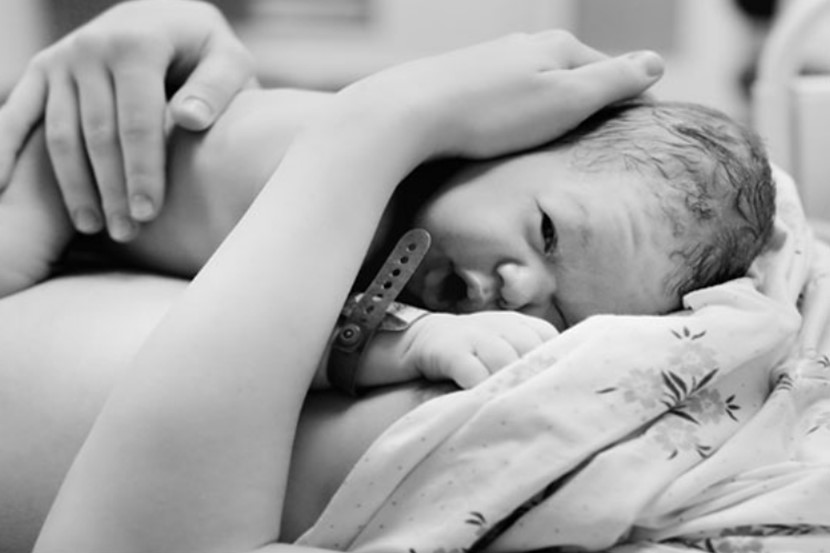Vaginal Birth after Caesarean VBAC - explained

If you have had a caesarean, VBAC may be a term that’s weighing on your mind. Dr Martin Sowter explains the options, the risks, and those confusing acronyms.
In 2014 one in four women in New Zealand will give birth by caesarean section. This figure has changed little in over ten years. Even among healthy, first-time mothers, under-35 with a problem free pregnancy, the C-section rate in 2012 was 18% (the Ministry of Health refers to such a woman rather clinically as a “standard primipara,” in case you were wondering). This means that each year there are many thousands of women who have had a baby born by C-section who will need to consider how any future children will be born.
If you are in this situation Dr Google will point you to any number of patient stories, support groups, medical journal articles, government guidelines, decision-making tools and maybe soon a range of android and iOS apps. You may also be given a hospital information leaflet or guideline at some point in your pregnancy. You’ll find yourself reading or hearing a number of terms that range from the ominous; Trial of Labour (TOL), to the fluffy; Positive Birth After Caesarean (PBAC) or neutral; Vaginal Birth After Caesarean (VBAC). You’ll also read other, less reassuring terms such as “scar rupture,” “scar dehiscence” or “emergency caesarean.”
A big decision
For some women, medical reasons or past experience means making a decision to give birth vaginally or by repeat C-section is easy, but for most the decision is much harder. Often you will be given a range of opinions and you may find that in a “client-focussed care environment” your midwife or obstetrician appears reluctant to give a strong reason to choose either option. You’ll also get a range of opinions from your partner such as, “I’ll support you whatever you decide” or “Just do what’s easiest,” neither of which is, frankly, much help.
The two most important questions women and their partners usually want answered are, “How likely am I to deliver vaginally (or have an emergency C-section)?” and, “What are the risks of VBAC or caesarean section?”.
Answering that first question is not always easy. More than a few medical statisticians have taken a hospital’s, or even a nation’s, birth statistics to try and develop a way of predicting how likely women are to deliver vaginally if they have had a previous C-section. It would be great if your LMC could just enter some parameters into a computer programme or the above mentioned app and then be able to say “you have an 86% chance of delivering vaginally” or something similar. Unfortunately, even when based on huge databases the predictive power of this approach is not great. Being told “You have a 40 to 75% chance of a normal delivery” is not great guidance.
We do know that there are some factors that make a vaginal birth less likely after C-section:
• Older women and women who are significantly overweight are more likely to need a repeat C-section in labour.
• Women with a previous C-section who go into labour more than a week overdue, or have their labour induced are less likely to deliver vaginally.
• If the estimated weight of your baby on an ultrasound scan is over 4kg or baby’s head is not engaged around your due date, you are also less likely to deliver vaginally.
If most of these factors are present your chances of a successful VBAC will be well under 50%. Conversely, younger, slimmer women with an average sized baby who is well engaged by their due date and who go into labour naturally will have at least a 75% chance of a vaginal delivery.
The reason for your previous C-section may be important, but “getting stuck” in labour previously doesn’t always mean the same thing will happen again. Usually women don’t progress in their first labour because they are not contracting well or their baby is lying in a posterior positon. Relatively few women are “too small” to ever be able to deliver vaginally.
Weighing up how likely a planned VBAC is to result in a vaginal delivery is important from a medical point of view because C-section carries a significantly higher risk of infection, heavy bleeding or anaesthetic complications. If it seems that the chances of delivering vaginally are low it may be better to plan an elective C-section to minimize those risks. At the same time, multiple C-sections also carries risk, and if the chances of a vaginal delivery appear high, VBAC is a good option.
What are the risks?
Explaining medical risk is always a challenge. Some couples might feel a risk of 1 in 1000 for a birth complication is very high and for others a risk of 1 in 100 might seem quite reasonable. Giving risk estimates for VBAC is also difficult because for rare events very large studies are needed and often in very large studies not all the information has been collected reliably.
The New Zealand VBAC guidelines from the Ministry of Health are now over 10 years old and there are no plans to update them. For the following statistics, I have relied on the Royal College of Obstetricians and Gynaecologists Guidelines from the UK (you can access them at www.rcog.org.uk/womens-health/clinical-guidance/birth-after-previous-caesarean-birth-green-top-45).
Scar rupture
This is where the scar on your uterus gives way during labour. An urgent emergency C-section will almost always be needed and there is a risk that your baby will be harmed as scar rupture compromises baby’s blood and oxygen supply. It can also be associated with significant maternal bleeding.
Scar rupture occurs in between one in 200 and one in 400 labours in women with a previous C-section. It occurs in less than one in 5000 women who have planned a caesarean delivery.
VBAC risks
Two factors slightly increase the risk of stillbirth in women planning to give birth vaginally after a previous caesarean section. The first is that being delivered by C-section at 39 weeks of pregnancy may remove the risk of an unexpected stillbirth that would be present during the next one to two weeks before a natural labour might occur (this is about a one in 1000 event). It also removes the risk of a stillbirth from a scar rupture in labour or other complication of labour (this is about a one in 2000 event).
The risk of baby suffering from a lack of oxygen and potentially long term disability with a planned VBAC are about one in 1000 (about half of these cases are due to scar rupture and half due to unrelated complications of labour). Delivery by caesarean section removes these risks. These risks might sound high but are in fact very similar to the risks all women have if planning to give birth to their first baby vaginally.
Planned C-section risks
The main disadvantage of being born by C-section is an increased risk of short term breathing problems (about 2% in babies born by planned VBAC and 4% in babies born by planned caesarean).
C-section is less safe for a mother than a vaginal delivery but the increased risks of an emergency C-section in late labour mean that the risks for some women may actually be greater with a planned VBAC than a planned caesarean delivery.
Making the decision
So now you have a few statistics and facts, what should you do? Firstly, New Zealand’s National Maternity Guidelines state that if you have had a previous C-section you should be referred during your pregnancy to an obstetrician for a consultation. It is important that you make sure this happens during the course of your pregnancy. Ideally, it should occur with a doctor who has access to a full set of notes from your previous pregnancy. You will then have an opportunity to discuss what approach might be best for you.
Some issues that you may want to consider are that if you do not want to have any chance of an emergency C-section, or feel unhappy about the possible risks of VBAC then you should request delivery by planned C-section. Women who had a difficult first labour that eventually ended in a caesarean delivery may prefer this approach.
Others may be keen to aim for VBAC if all looks reassuring but don’t want history to repeat itself. In that case it is important the staff looking after you in labour are aware of your fears and are able let you take an active part in any decision if it looks as though your labour is not progressing normally.
If you do plan to deliver vaginally you will be advised to deliver in hospital rather than at home. This is because, although uncommon, any complications related to your C-section scar may mean you need to deliver quickly rather than after a transfer from home or a midwife-only birthing unit.
The final decision is very much a personal one. Currently, about half of all women who have had their first baby by caesarean section will opt to deliver by planned caesarean again. For some of those women there are good medical reasons for this, but many simply prefer to avoid the possibility of an emergency C-section or have concerns about the safety of VBAC. About two thirds of women who plan to deliver vaginally after a C-section will do so, with one third ending up delivering by C-section once again.
You are of course also free to change your mind about VBAC during your pregnancy. Some women start to feel more confident about VBAC as their pregnancy progresses and all looks normal. Others may feel that their earlier plans to deliver vaginally seem less attractive, particularly if the problems that led to the original C-section seem likely to occur again.
Ultimately though, the final decision is yours and once you have considered all your options you shouldn’t feel pressured into delivering one way or another.
Dr Martin Sowter (BSc MB ChB MD FRCOG FRANZCOG) is a part-time specialist at Auckland City Hospital in the fertility and menstrual disorders clinic. He also works privately as part of the specialist team at Auckland Obstetric Centre.
Photography: Keri-Anne Dilworth, firstlightbirthphotography.co.nz

AS FEATURED IN ISSUE 27 OF OHbaby! MAGAZINE. CHECK OUT OTHER ARTICLES IN THIS ISSUE BELOW


















